Sri Lanka

Sri Lanka is known as Pearl of the Indian Ocean, given to this small island nation due to its incredible natural beauty, extraordinary biodiversity as well as its precious gemstones.
The wide variety of habitats supports 492 bird species, over 90 terrestrial mammals,28 marine mammals, 4000 flowering plants, more than 100 amphibians and at least 200 species of reptiles.
It is home to many endemic species, those found nowhere else in the world.
The island of Sri Lanka is about half the size of the state of Floridia. It has a coast line of 833 miles. The highest mount is over 8,200 feet. Almost 25% of the country is protected as reserve forest, strict nature reserves or national parks. It is about 20 miles from the south-eastern tip of India. The island has a population about 22 million and the highest literacy rate in South Asia, at 92%

There are three species of monkeys in Sri Lanka. This is the endangered endemic Toque Macaque, sometimes refered to as the temple monkey, This is part of the temple troop at Polonnaruwa, a well preserved 12th century ruins, once the capital.



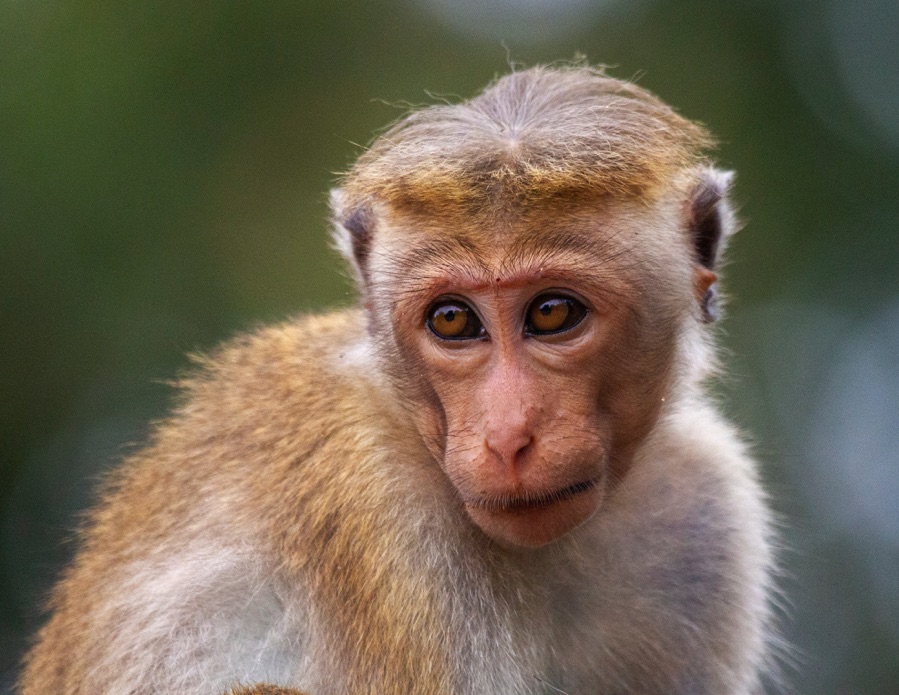



Grooming is an important bonding behavior in these primates
Here the matriarch and oldest member of the troup is groomed. The life span of a toque macaque can be up to 35 years.
The male will often eat the sperm from the female of a competeting male. This image is after a failed attempt at copulation

The critically endangered Purple-faced Leaf Monkey is much more timid and hard to find. They have been included in "The Worlds' 25 Most Endangered Primates"
They are also endemic to Sri Lanka




White-throated Kingfisher
White-bellied Drongo


Pond Heron

Garden Lizards

Paddy field pipit
Sambar Deer
In Hurulu N.P. we had some excitement.
We were obseving this large tusker. We were actually parked in the mud. And there were two water buffalo in a small pool behind our jeep.
The tusker browsed closer. The water buffalo spooked and the ele turned and charged our jeep.
I was up in the open top jeep and got off a shot, loosing my balance, as the driver floored the jeep out of the mud.
Our local guide, Gayathri in our other jeep, shot a quick video. The loud trumpeting was really something. He may have been upset with the buffalo or us.
Polonnaruwa
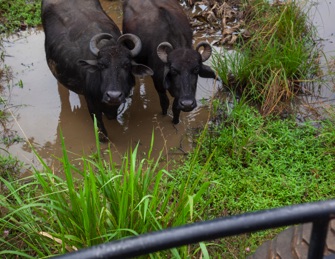

Indian Roller

Indian Robin

Young Monitor Lizard
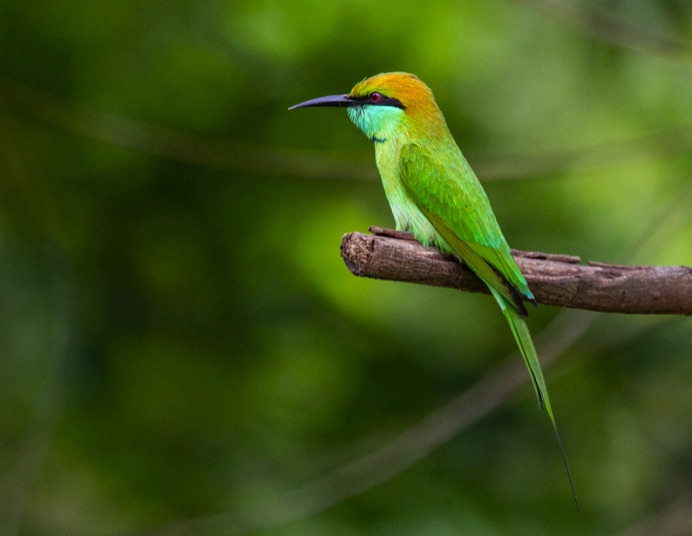
Green Bee-eater
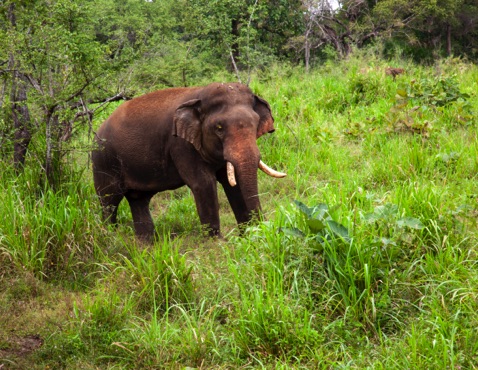

Magpie Robin with nesting material

Horton Plains, Sri Lanka's highest National Park,
above 7000 feet, above the clouds


Gray Langur Monkey

Pied Bushchat
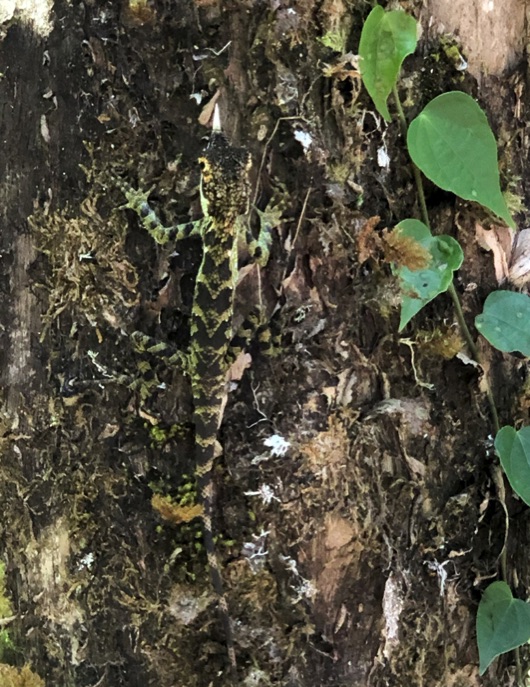
Camouflaged Tree Lizard


In Yala N.P. we found this Elephant really enjoying dining on Lotus Blossoms



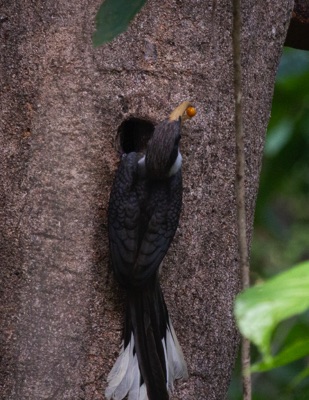
The male brings date fruit to the female until she and the chicks fledge, then both will feed the brood. Here the male turns head to the side and regurgitates a fruit, then turns and feed the chicks. We saw him regurgitate five date fruits before flying off for more.
The hornbill female will enter a woodpecker nest and due to hormornal changes will loose her feathers which she uses to make her nest. She will then lay her eggs. The male will seal off the nest opening with mud for safety.

As in India, the Spotted Deer and Langur Monkey are often found together. The monkey has excellent vision and the deer had a excellent sense of smell. Together the form a defense against a leopard attack. The monkeys will shake the tree limbs to give the deer leaves to eat.

Osprey


This Land Monitor is digging in a termite mound looking for treats.
Water Buffalo with an egret getting a better view for fishing
Ceylon Grey Hornbill
endemic to Sri Lanka

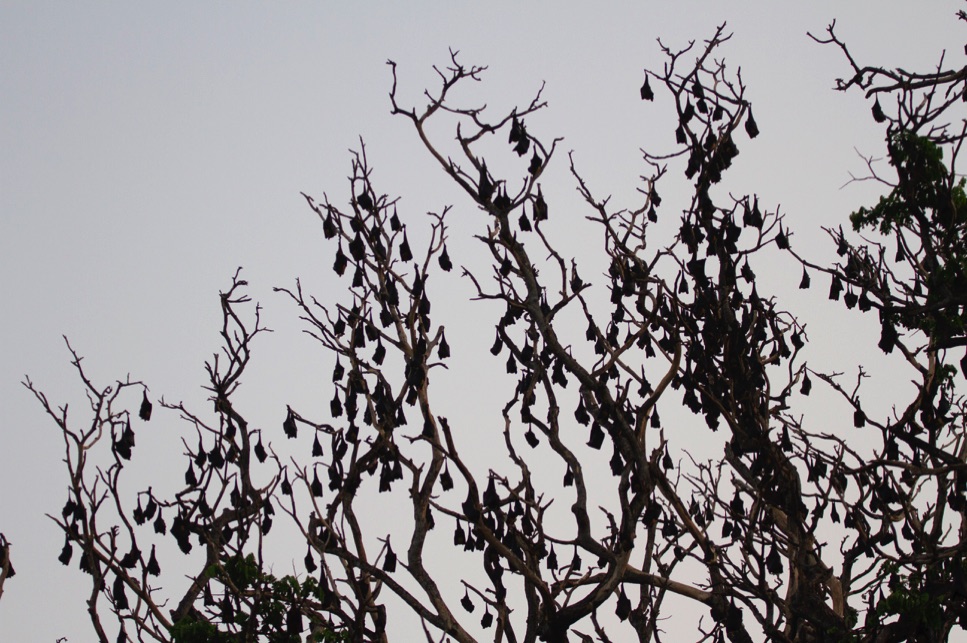



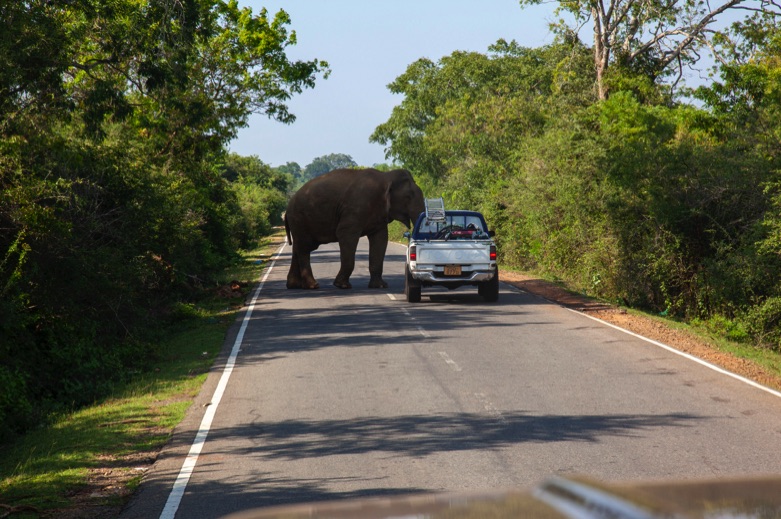

The osprey and owls are the only raptors whose outer toe is reversible, allowing them to grasp their prey with two toes in front and two behind. This is particularly helpful when they grab slippery fish.
The Elephant is the world's largest land animal and this one knows how to capitalize on this.
She has learned to block traffic until someone throws out fruit for her. Drivers carry fruit to get her out of the way
Chestnut-headed bee eater
We got up before sunrise In Bundala NP to see the fruit bat trees.
Thousands of fruit bats roost in these trees for the night

Blue bee eater

Malabar Pied Hornbill
This female hornbill has a distinctive mainly black casque. Females have white orbital skin which males lack.
The casque on the top of the bill is hollow and made of keratin. It acts as a resonating chamber to amplify the bird's calls.
Sri Lanka is a birder's paradise with almost 500 different species. The recorded bird count for our safari was 180 different bird species.
She came up to our jeep and asked nicely. We had no fruit but were able to drive around her.


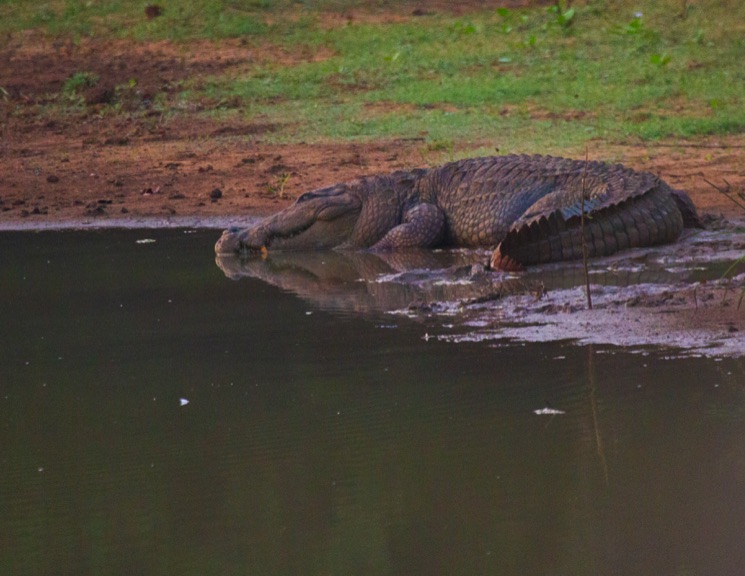




Changeable Hawk Eagle
This raptor is endemic to Sri Lanka and gets its name from wide variations in plumage with moult and age.

Yala National Park
Covers 378 square miles and is home to 215 bird species and 44 mammal species. It has one of the highest leopard densities in the world.
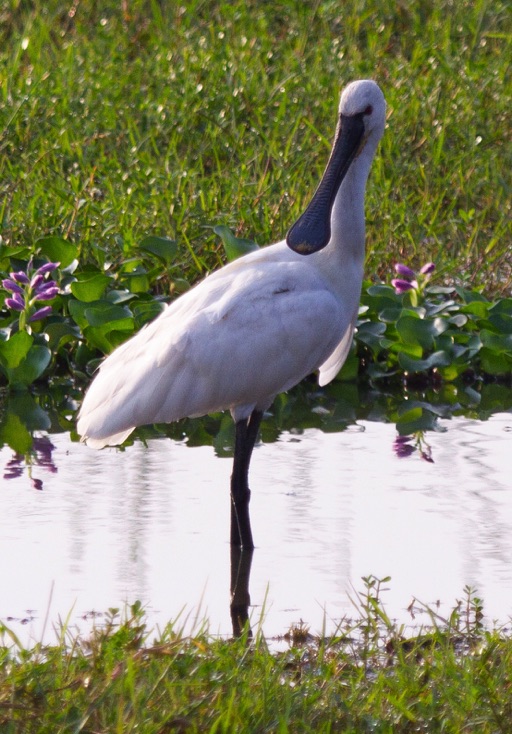
Eurasian Spoonbill
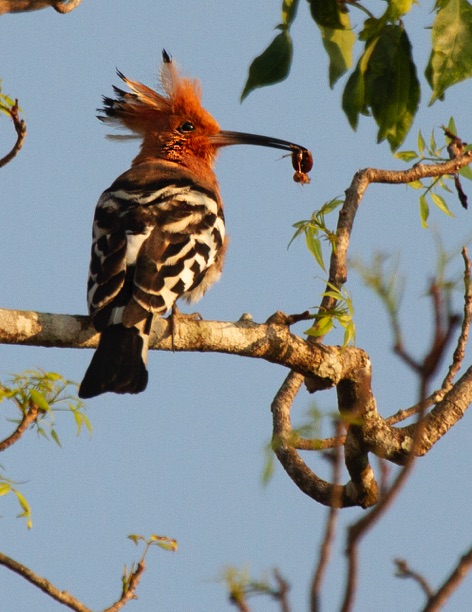
Hoopoe with his bug meal

Whistling Duck

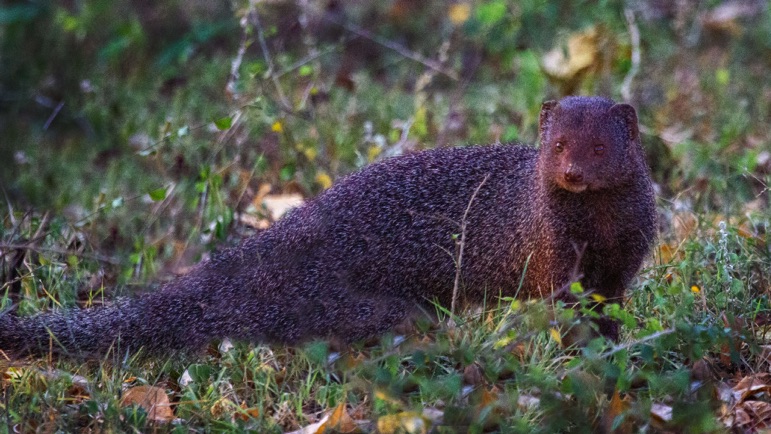
Mongoose
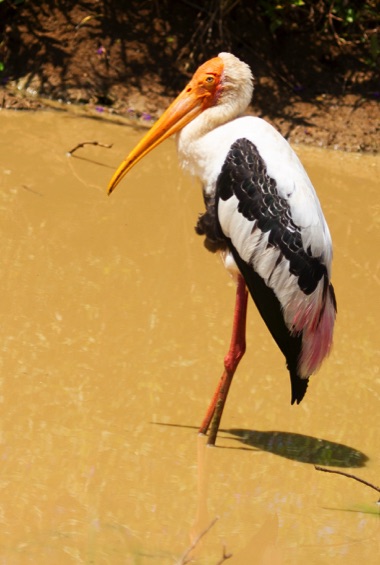
Painted Stork
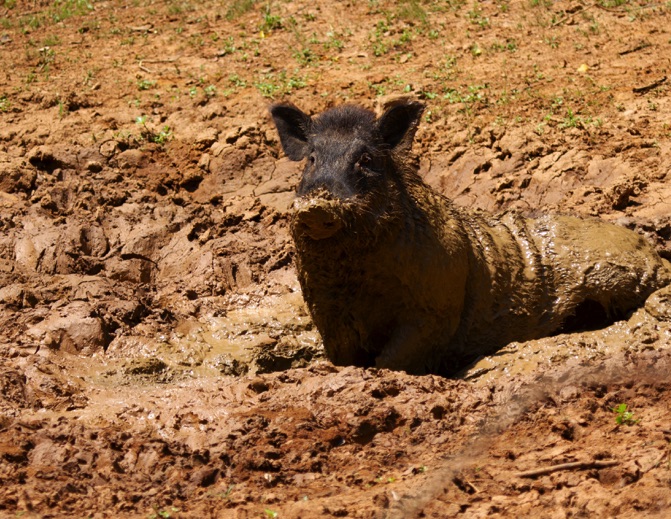
Muddy Boar



Roughing it in Yala N.P.
Three days and nights on safari in Yala

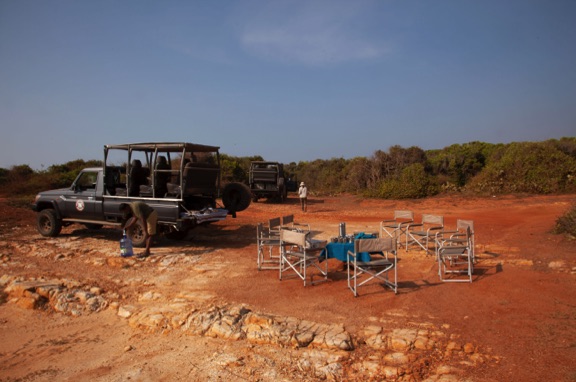
Lunch spot

Their name comes from the tuft of hair at the top of their heads which looks like the brimless hat known as a “toque.”
The male toque use their large canines to fiercely defend their territory and mates against competing males, and these contests are often fatal.
The Mugger Crocodile is the top predator in its habitat,
Laying in the shallows by a bird rookery during the breeding season for the birds, the mugger crocodiles have been observed to have sticks laying across their heads and snouts. During this time of year, the birds are desperately looking for sticks to build their nests, and the crocodiles were taking advantage of this by using sticks as lures–the first evidence of tool use in reptiles. If a bird approached to take a stick, it became a quick meal for the croc. This behavior only takes place during the nest-building season near rookeries, suggesting that higher-level intelligence might be more widespread in reptiles than originally thought.
How he got his name
Our guide, Toby Sinclair
A very interesting gentleman. He's a wildlife photographer and has been involved in the production of wildlife documentaries in India, Sri Lanka, Bangladesh, Bhutan, and Nepal, He has worked with David Attenborough, and on projects for National Geographic, PBS, BBC-Discovery, Netflex, among others. He knowledgeable on the wildlife and cultures.
Our local guide for the trip was Gayahthri “Guy” Tissera a real birder and fount of knowledge about the island.
Our seven traveling partners came from Wisconsin, Illinois, and California.
Our local guide at Yala N.P. Ramani Jayewardene, a delightful lady to travel with and learn from.


A Greater Egret with catch




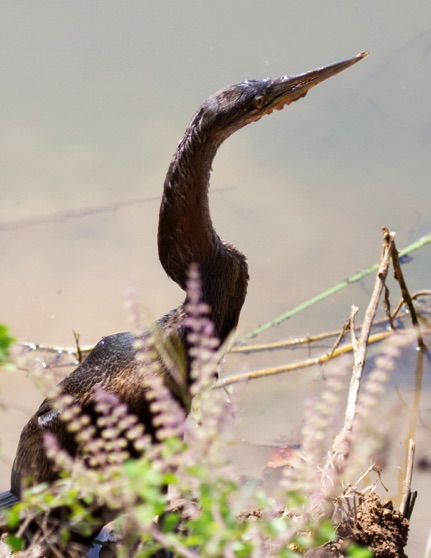
We found this Darter with his catch
Getting it down looks painful
It seemed to go right on down










Toque Monkey tree
Gray Langur family
A male peacock at roost, interesting tail feathers


A family of monkeys living on the edge
The Sri Lanka Jungle Fowl
An endemic species and the national bird of Sri Lanka. Roosts high in trees at night.
The leopards of Sri Lanka are elusive. This one has a good look at us through the leaves.
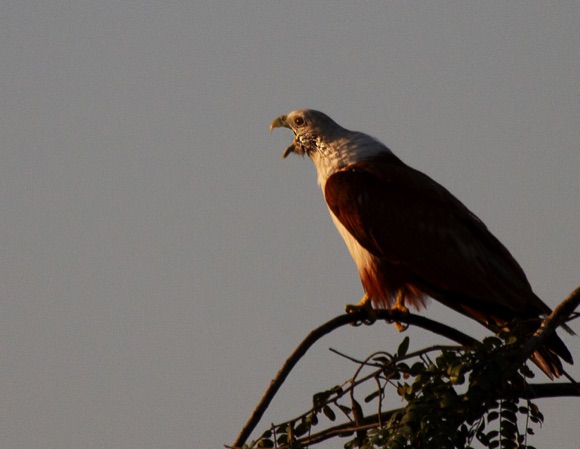
Brahminy Kite Eagle

Yellow-wattled Lapwing
Brown Shrike
The peacock has a very loud call. At 5am, right outside our tent at Yala N.P. it was quite the wake up call.

Pygmy Lizard.
Our 12 day expedition of the wildlife and cutural treasures of Sri Lanka was put together by Natural Habitat.
2022